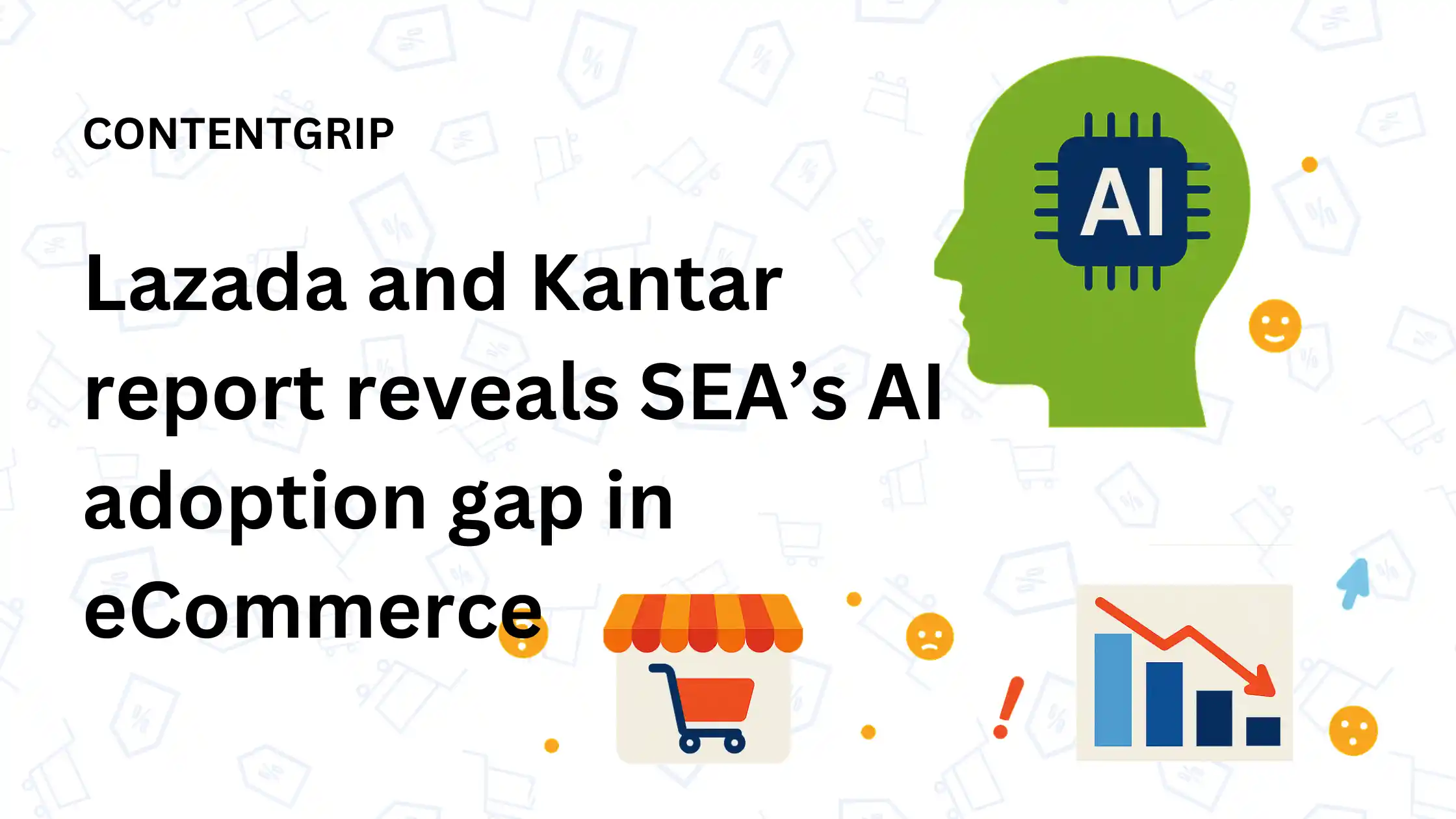AI is hot in Southeast Asia—but most sellers still aren’t using it
Most online sellers in Southeast Asia say they understand AI—but only a fraction are using it. Lazada and Kantar's report explores the reason behind this phenomenon.

Despite growing buzz around AI, many online sellers in Southeast Asia are still figuring out how to apply it in practice. That’s the key takeaway from Lazada’s latest regional study, developed in collaboration with research firm Kantar.
The report, Bridging the AI Divide: Online Seller Perceptions and Adoption Trends in Southeast Asia, surveyed more than 1,200 eCommerce merchants across six countries. While most respondents expressed familiarity with AI and optimism about its benefits, only a minority have actually integrated it into their businesses.
This article explores the findings in more detail—what they reveal about digital maturity in the region, the barriers holding sellers back, and how platforms like Lazada are attempting to close the gap.
Short on time?
Here’s a table of contents for quick access:
- AI is known—but not embedded in operations
- SEA markets show uneven AI maturity
- Lazada’s AI playbook targets seller pain points
- What marketers should know

AI is known—but not embedded in operations
Lazada’s report uncovers a widespread enthusiasm for AI—but with limited execution. Almost 90% of sellers believe AI can improve productivity, and 93% agree it could cut costs. Yet 64% cite time and cost barriers as the main reasons they haven’t implemented it.
Interestingly, the report also shows that many sellers overestimate their own AI maturity. While some markets like Indonesia report 52% usage, the actual rate of full integration is much lower.
The study groups sellers into three camps:
- AI Adepts (24% region-wide) use AI across most of their operations.
- AI Aspirants (50%) have started but haven’t fully integrated it.
- AI Agnostics (26%) still rely heavily on manual processes.
The bottom line: most sellers are stuck in the middle—not quite AI-powered, but not ignoring it either.
SEA markets show uneven AI maturity
Adoption varies sharply by country. Vietnam and Indonesia top the list at 42%, while Singapore and Thailand are close behind at 39%. But Malaysia and the Philippines trail, hampered by infrastructure gaps and support challenges.
Thailand boasts the highest share of AI Adepts at 30%, suggesting a strong top tier even if broader penetration is still growing. Meanwhile, 76% of all sellers in Southeast Asia fall into the Aspirant or Agnostic categories—meaning the majority still need significant help to turn AI ambition into action.
Lazada's AI playbook targets seller pain points
To close that adoption gap, Lazada is rolling out tools aimed at demystifying AI and reducing friction for sellers. The company has launched its AI Readiness Playbook, which offers best practices to integrate AI into everyday workflows.
On the product side, new tools focus on streamlining listings and communications:
- AI Smart Product Optimisation helps polish titles, descriptions, and visuals—complete with background editing and model suggestions.
- AI-Powered Translations enable sellers to localize listings into regional languages without needing separate teams.
- Lazzie Seller, an AI assistant in the Alibaba Seller Centre, answers FAQs, flags store risks, and recommends growth strategies.
According to the report, 67% of sellers are already satisfied with Lazada’s current AI offerings, suggesting strong early momentum.
What marketers should know
If your brand or client plays in Southeast Asia’s eCommerce space, here are the key takeaways:
1. AI is a brand differentiator—for now
With most sellers still in the Aspirant stage, early AI adopters can stand out by automating repetitive tasks and refining their listings faster.
2. Localization matters
AI-powered translation could open up new micro-markets for sellers who previously lacked the resources to scale regionally.
3. Training beats tech
The biggest blocker isn’t tools—it’s people. Sellers say they need education more than features. Marketers should invest in training and onboarding to get full value from AI capabilities.
4. Platform-native tools may win out
Instead of sourcing third-party solutions, many sellers are leaning on platform-native AI to simplify adoption. Marketers building on Lazada should take advantage of this ecosystem momentum.
Lazada’s findings make one thing clear: the appetite for AI is strong in Southeast Asia, but the leap from interest to implementation is still a work in progress.
For marketers, that means opportunities to lead—but also a responsibility to educate and support. Whether through tech tools, upskilling, or smarter workflows, those who help sellers bridge the AI gap will unlock growth while shaping a more modern eCommerce ecosystem.




